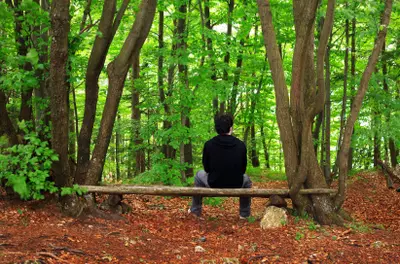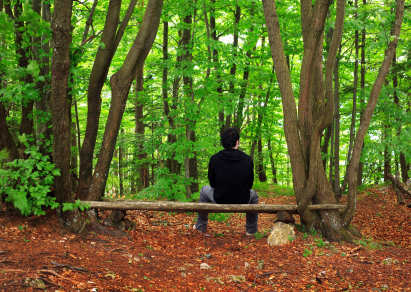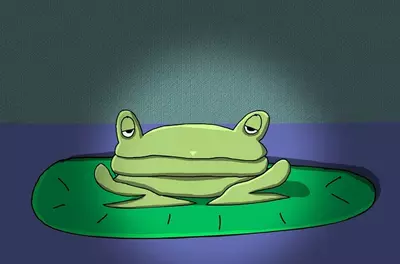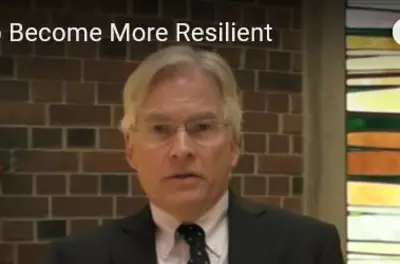How to Deal with Fear and Anxiety

 In this section we address things you can do on your own to work with fear and anxiety. We do not cover the many valuable techniques and therapies available when working with professional psychologists or other providers. These are essential for those who have experienced trauma or are suffering from intense fear or anxiety.
In this section we address things you can do on your own to work with fear and anxiety. We do not cover the many valuable techniques and therapies available when working with professional psychologists or other providers. These are essential for those who have experienced trauma or are suffering from intense fear or anxiety.
Avoid avoidance
The only way to deal with fear is to face it. Avoiding our fears only prevents us from moving forward—it makes us anxious. But be gentle with yourself and do only what feels safe to you! If you find yourself getting more panicky, take a break and find something pleasant or comforting to notice or do. If it feels safe later, you can try to explore your fear again, taking breaks as needed. If you find it difficult to address chronic fears or anxiety on your own, note that therapists can be invaluable in helping work through avoiding strategies. If you have experienced trauma, it is especially important to work with a therapist to create a safe environment where you can face your fear and reconstruct your memories.
If the fear or anxiety is milder, you can try mindfulness meditationLearn more about mindfulness techniques. All you need to do is sit quietly and observe the present moment. If fear or anxiety arises, recognize it. If you can, be curious. Observe the anxiety. Notice how it feels in your body. Notice any associated thoughts. See if you can observe it as it is; don’t get involved in the story, or try to get rid of it or change it. And when you need, take a break and turn your attention to something neutral, like your breath or hands in your lap. Note that anytime you feel too agitated to be curious, it may be best to stop and open your eyes and notice objects in the room, or take a little walk.
“Every time your fear is invited up, every time you recognize it and smile at it, your fear will lose some of its strength.”
Promote positivity
Learn how to increase positive emotionsFear causes us to notice and remember negative events, which reinforces our sense that the world is a scary place. We can work to change that by deliberately noticing what is positive—the joy we feel when we see someone we love, the pleasure of a sunny day, the beauty in nature, the fun of an outing, the humor in a situation.
According to research by Barbara Fredrickson, positivity broadens our perspective—we literally have a wider view, which offers us more options. And the more we practice positivity, the more it builds, creating a resilience that allows us to function even in difficult times.
Find meaning
Fear can shatter our sense of the world as we know it. Those who have experienced trauma may also have experienced real losses that further lead them to question the meaning of their lives. Trauma survivors also often feel guilt about what happened, feeling, illogically, that they could have somehow prevented it, and Learn what purpose is and how to enhance itthis shame can also contribute to doubts about their meaning.
But whether we suffer from anxiety or trauma, it is important to rediscover a sense of purpose. An 80-year study of factors contributing to longevity found that individuals who return to healthy behaviors after trauma are the ones able to find meaning in the traumatic experience and reestablish a sense of security about the world.
Healing through meaning
Logotherapy, which literally means “healing through meaning” has been used successfully with veterans with post-traumatic stress disorder (PSTD).
Part of the efficacy of this therapy is simply in letting people tell their stories and feel understood, which in itself helps heal trauma. Another part is finding a way to use skills and experience, including skills learned through trauma, in a meaningful way.
For example a veteran who experienced homelessness because of PSTD, may be able to find meaning in helping others in the same situation at a homeless shelter.
Get support
Learn more about social supportFear can also cause us to feel disconnected from others. The longevity project also found that one of the key predictors for longevity of people who had encountered trauma in their lives was the strength of their social relationships.
There are many reasons for this. Friends and family can help us make a realistic assessment of the threat. With the support of others, we feel more confident that we can deal with issues. And physically, having a loved one close calms us and reduces the fight or flight response.
Go for a walk in nature
Learn more about how nature enhances our wellbeing and resililenceAs the new field of nature-based therapies shows, being in nature reduces fear and anxiety and increases pleasant feelings. Looking at a scene of natural beauty, people describe their feelings with words like calm, beauty, happiness, hope, and aliveness. Being connected to nature not only makes people feel better emotionally, it reduces blood pressure, heart rate, muscle tension, and the production of stress hormones—all signals of stress and fear.
So when you are fighting feelings of fear or anxiety, find a park or greenspace and go for a walk or run. In addition to the restorative effects of nature, the physical exercise will also help your mood.
Practice self-compassion
Research has suggested – and personal stories support – that many members of racial, ethnic, sexual, and gender minority groups experience higher levels of fear and anxiety, due to alienation and discrimination, which sometimes includes violence. Self-compassion can be a deeply healing practice for people experiencing this type of ongoing threat. That's because in addition to treating yourself as you would a beloved friend, self-compassion includes reflecting on the shared suffering of other people like you.
In summary
Face your fears and anxieties so they don’t become debilitating. Identify ways to create a sense of personal control or mastery in your life.
- Practice stress reduction techniques, such as mindfulness meditation or aerobic exercise.
- Shift your focus to the positive emotions in daily life.
- Work to identify meaning and purpose in your life.
- Get support from others.
- Go for a walk or run in a park.
- Practice self-compassion.
And finally, even if you are challenged by fear, don’t ignore other parts of your life. It is possible to find wellbeing in relationships and purpose even while working on security.
Don't forget to work for the greater good as well
Become involvedTake gentle actions that increase safety and reduce violence in your community.
Become engaged with your community and environment.
Suggest or support policies that improve everyone’s security!

Reduce fear with mindful relaxation
Mindful relaxation invokes the "relaxation response" to combat stress and anxiety.
Reduce Fear with Mindful Relaxation
 Mindful relaxation invokes the relaxation response, which has a physiological impact that helps you down-regulate your stress response and work more effectively with fear and anxiety. The relaxation response increases alpha brain wave activity and lowers blood pressure, pulse, respiration rate, metabolic rate, oxygen consumption, anxiety, and produces a greater sense of wellbeing.
Mindful relaxation invokes the relaxation response, which has a physiological impact that helps you down-regulate your stress response and work more effectively with fear and anxiety. The relaxation response increases alpha brain wave activity and lowers blood pressure, pulse, respiration rate, metabolic rate, oxygen consumption, anxiety, and produces a greater sense of wellbeing.
Over time, you will develop an ability to shift into a more relaxed state in the midst of stressful situations.
Try these steps:
- Commit to an uninterrupted length of time each day to do your practice. You might begin with five minutes and increase from there. Twenty minutes of relaxation once or twice a day is optimal.
- Choose a quiet place. Turn off the television, radio, computer, and telephone.
- Find a comfortable body position. You can sit or recline in a chair, or settle comfortably on the floor. Make sure you feel supported.
- Focus on the repetition of a word, sound, prayer, or your breath flowing in and out.
- Create a positive state of mind. While you may not always be able to block out worries or negative thoughts, you don't need to attach to them. Let them float by like clouds in the sky.

What is mindfulness?
Watch this animation to learn how intention, attention, and attitude interact and support one another during mindfulness practice.

Consider your social support
Watch this short video, in which Dr. Steven Southwick describes the most important factor in becoming more resilient to chronic stress and fear.

Try Mindful Mondays
The Earl E Bakken Center for Spirituality & Healing (creator of this website) offers free weekly Mindful Monday sessions to help you deal with the anxieties of life, along with many other programs and resources.
Website
Reflective Practices : This website offers how-to videos on meditation and yoga, as well guided meditations and information on other reflective (and calming) activities, such as creative therapies and journaling.
Books and Articles
Friedman, H., Martin, L. (2011). The longevity project. New York: Plume Book, Penguin.
Fredrickson, B. (2009). Positivity. New York: Three Rivers Press.
Hanh, T. (2000). No death, no fear: Comforting wisdom for life. Berkely, CA: Parallex Press.
Jessica R. Graham-LoPresti, Ph.D. et al. "How Black Americans Can Cope With Anxiety And Racism". Anxiety.Org, 2020, https://www.anxiety.org/black-americans-how-to-cope-with-anxiety-and-ra….
Niles, F. (2013). Five Ways to Live Courageously. Huffington Post. July 6, 2013. Accessed July 10, 2013 at http://www.huffingtonpost.com/frank-niles-phd/how-to-be-courageous-_b_3527678.html
Ropeik, D. (2004). The consequences of fear. EMBO Reports, 5(1), 56.
Southwick, S., Charney, D. (2012). Resilience: The science of mastering life’s greatest challenges. New York: Cambridge University Press.
Yoder, C. (2005). The little book of trauma healing. Intercourse, PA: Good Books.


